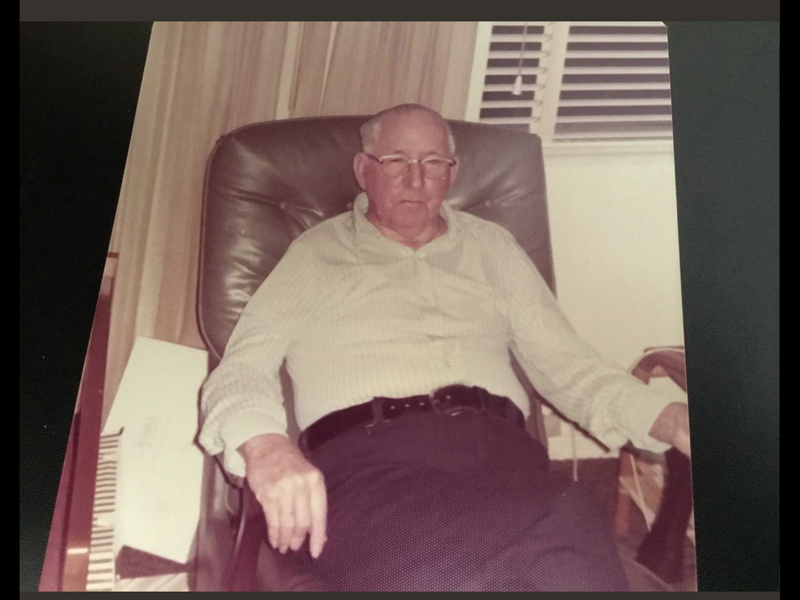Photographs economize the truth; they are always moments more or less illusorily abducted from time's continuum. -- Sally Mann
I only have one photograph of my Uncle Ray. At first glance, it is completely ordinary, but a closer look slowly reveals its secrets. A faded color print taken around 1980; he is sitting in my grandmother's Florida room in St. Petersburg on her brown leather recliner. He is wearing a white-striped dress shirt with the sleeves rolled up just over his wrists. His hair is freshly cut and face clean-shaven. Men from his time typically went to the barber shop once a week for a trim, and as a retired barber, that was especially important for him. Despite having just turned 80 years old, his face is smooth and tanned. His expression is what really tells this picture's story. Ray does not look at the camera, instead he seems totally lost in thought, seemingly unaware or unconcerned he is having his picture taken. He would be dead in a year.
Most people hope for a great love story, but some lucky people like Uncle Ray get the real thing. His started in the most unlikely of places: Lealman School No. 2, located at 42nd Avenue in St. Petersburg. Built in 1908, with community labor and $840, it featured two rooms with a removable partition. It was there in 1913 Ray first caught sight of his Gladys. Married for more than 40 years, there would be no children, but they had each other. Gladys taught school, and Ray became first a plumber, then school bus driver and finally a barber. A quiet and loving Christian couple, their great joy was the annual summer vacation trips they would embark on after Gladys school season was over.
When Gladys died in 1968, Ray was devastated. He stopped going out -- instead he would sit alone in the darkness of his modest home, surrounded by his memories. My grandmother -- who was born just a year after Ray -- brought her brother to live with her at her home in St. Petersburg, so she could look after him. It was there I would often visit with my Uncle Ray, barely engaging him in conversation, but typically with that same haunting expression captured so vividly in the old photograph. Slowly Ray just tuned out of this world and faded away without his Gladys.
A month after his death in 1981, I went to visit my grandmother, and she told me to go to Ray's old bedroom and see if I wanted to take anything before she threw out what was left. The room was almost bare except for a column of old photo books that measured almost 5 feet tall. Looking through them, I saw they represented more than 30 years of Gladys and Ray's annual summer trips. Faded old photographs of the same poses reenacted again and again at virtually every national park in America. I felt a great sadness as if Ray and Glady's souls were bound in these books and to dispose of them would be the disappearance of Ray as well. If photographs are memory, then to destroy these books would be the elimination of the last remnants of Ray's life.
The photographer Sally Mann says, we can admit that memory resurrects the dead, but these remain within their world, not ours. The universe covers the whole -- like a warm blanket. But this memory, she says, is the glue that keeps the universe as one: Although immaterial, it makes being possible -- it is being. Because it remembers itself, it exists. Because it exists, it remembers. But where does the self go? All the accumulation of memory -- does it disappear or fade slowly away just as Uncle Ray did?
I would like to think each of us leaves evidence on the earth that in ways bears our form. The poet Meghan O'Rourke put it this way: "The people we most love become a physical part of us, ingrained in our synapses, in the pathways where memories are created."
Standing in his room, I knew what to do. They say every picture tells a story, but sometimes a man's electric shaver can do the job as well.
NAN Our Town on 08/17/2017

